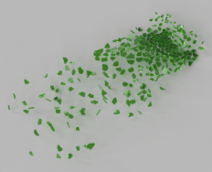Faster Acceleration Noise for Multibody Animations using Precomputed Soundbanks
ACM/Eurographics Symposium on Computer Animation 2012
Jeffrey N. Chadwick, Changxi Zheng, and Doug L. JamesPaper | Citation | Video | Source Code | Presentation Slides | Acknowledgements
Citation:
Jeffrey N. Chadwick, Changxi Zheng and Doug L. James, Faster Acceleration Noise for Multibody Animations using Precomputed Soundbanks, ACM/Eurographics Symposium on Computer Animation, July, 2012 (TeX)
Acknowledgements:
The National Science Foundation (HCC-0905506)
The Natural Science and Engineering Research Council of Canada
The Alfred P. Sloan Foundation
The John Simon Guggenheim Memorial Foundation
Intel (ISTC-VC)
Pixar
Autodesk
Vision Research
This research was conducted in conjunction with the
Intel
Science and Technology Center for Visual Computing.




